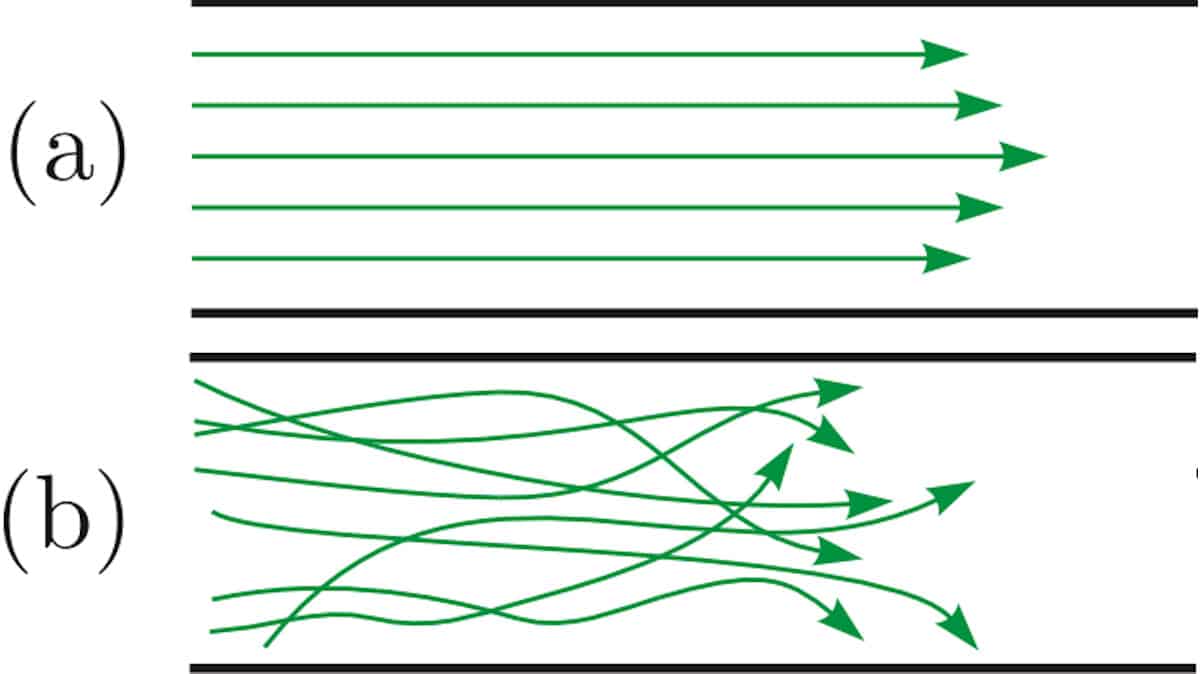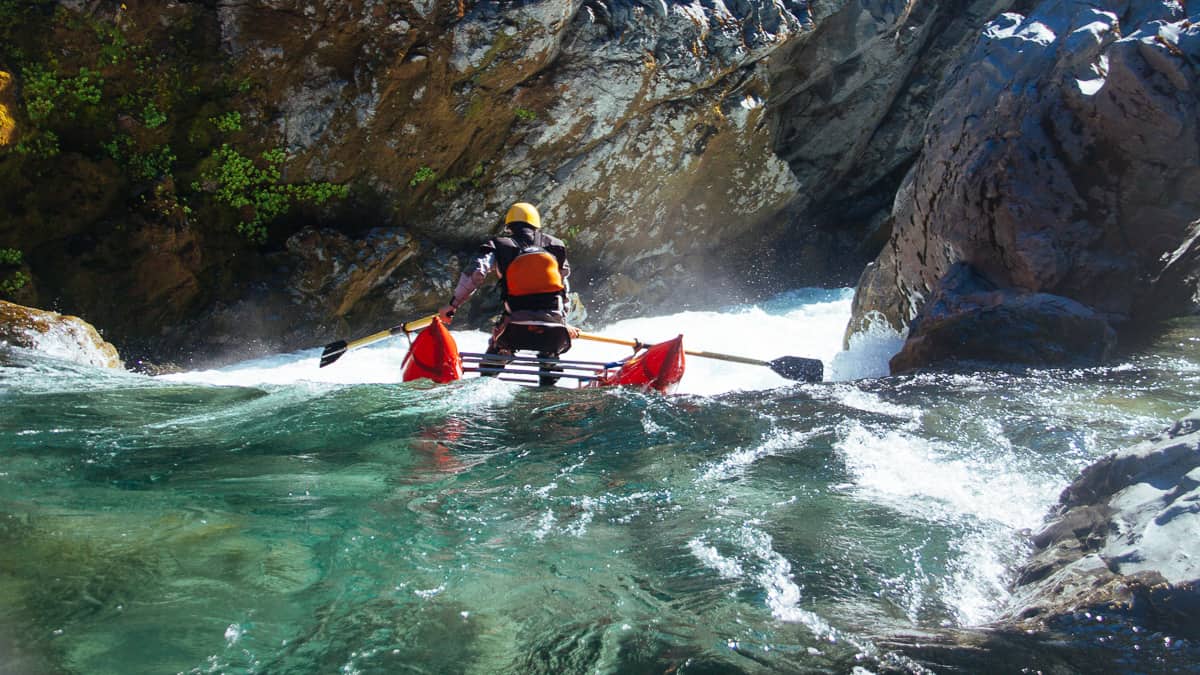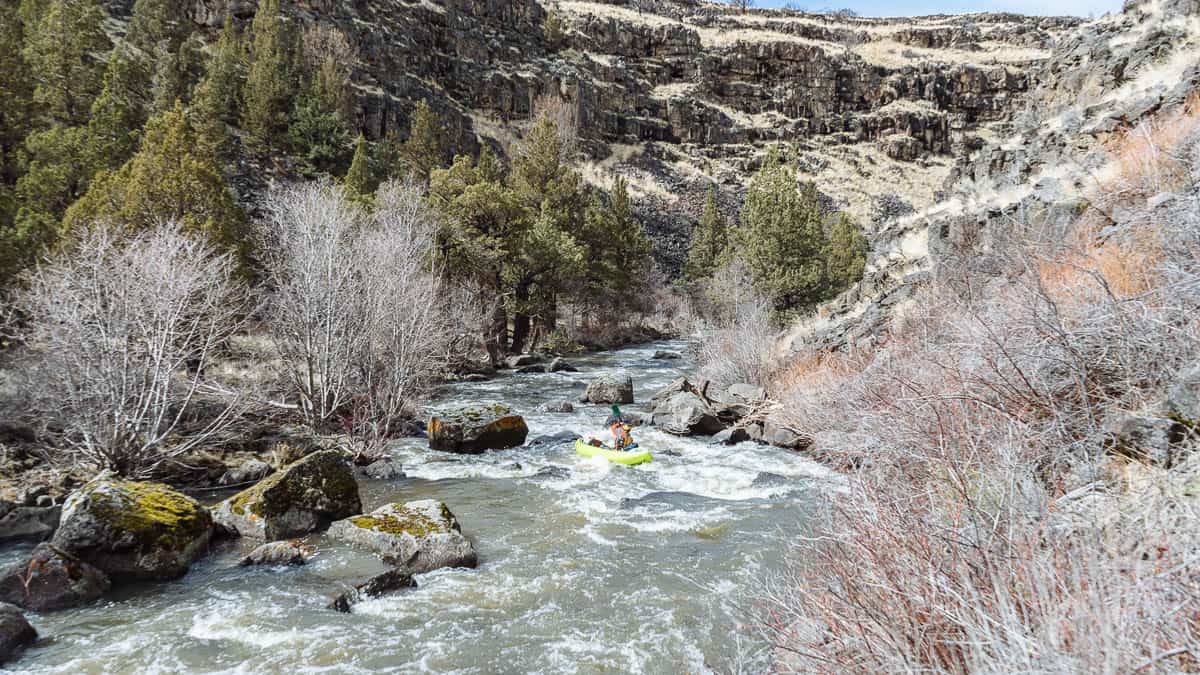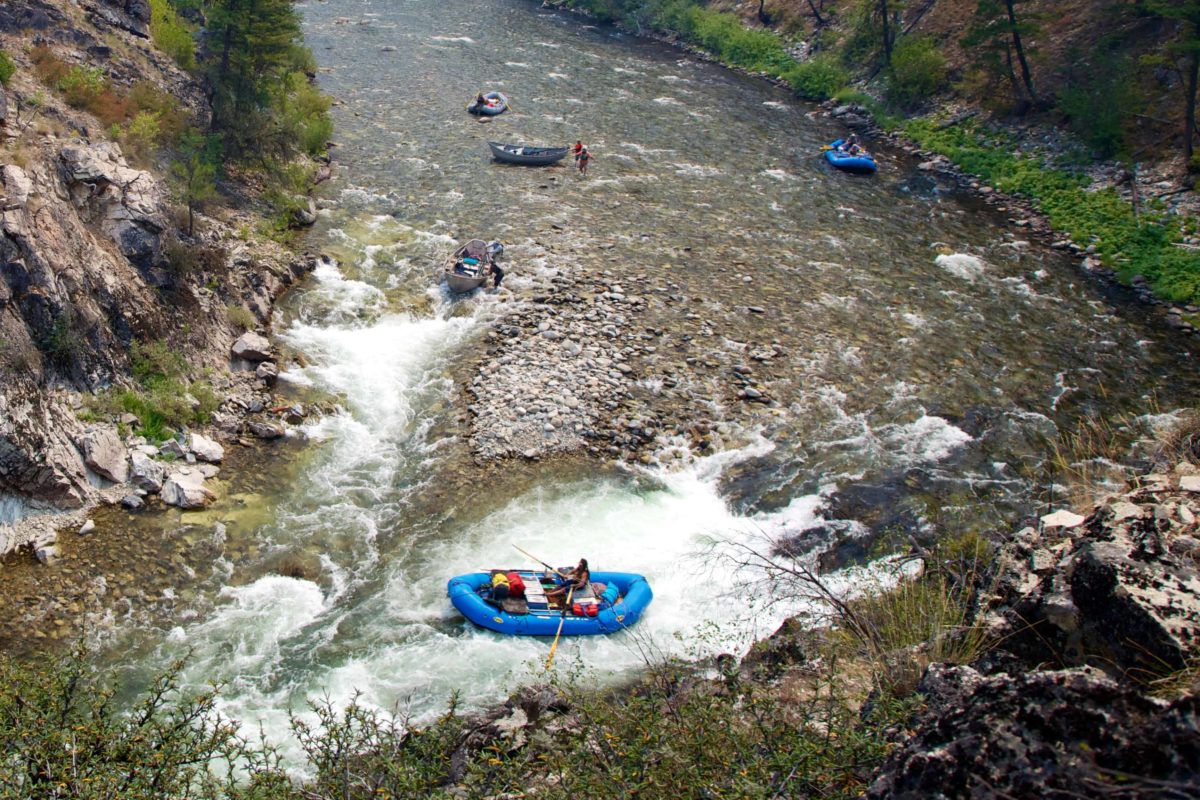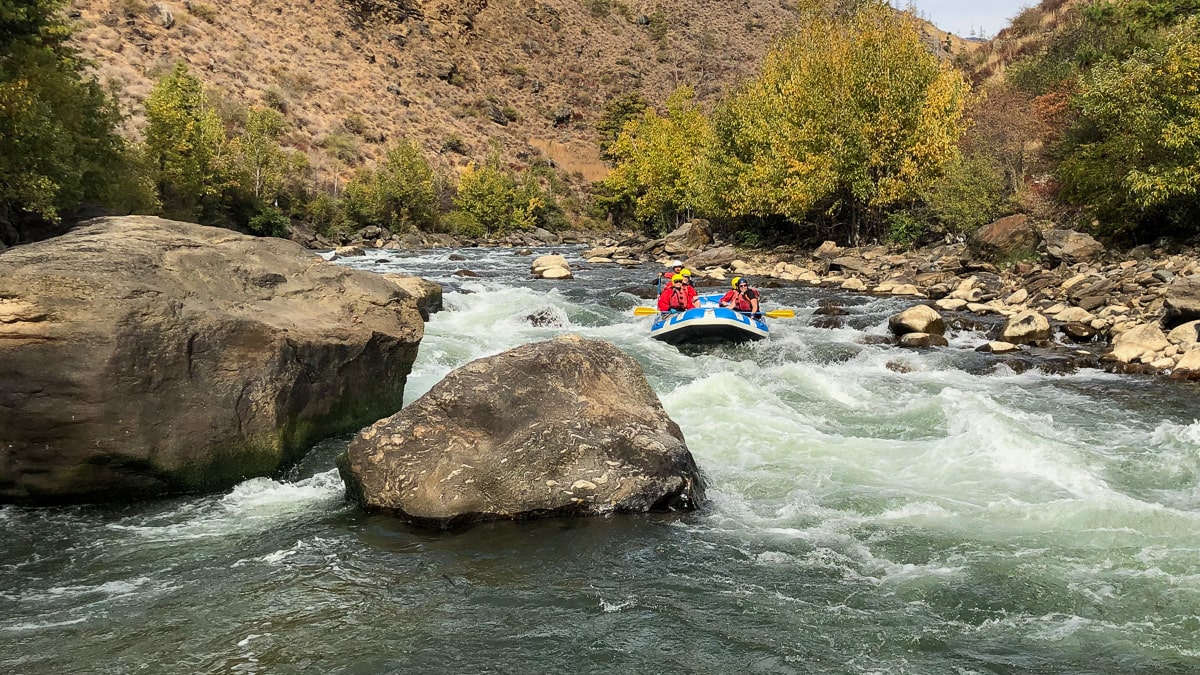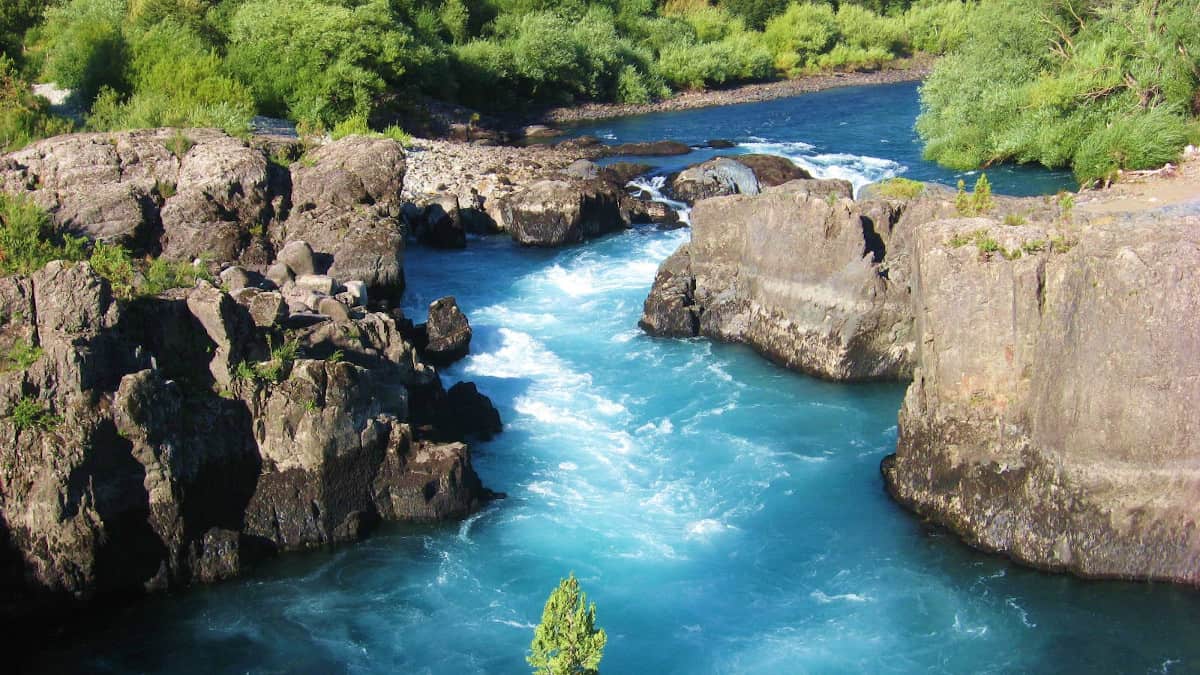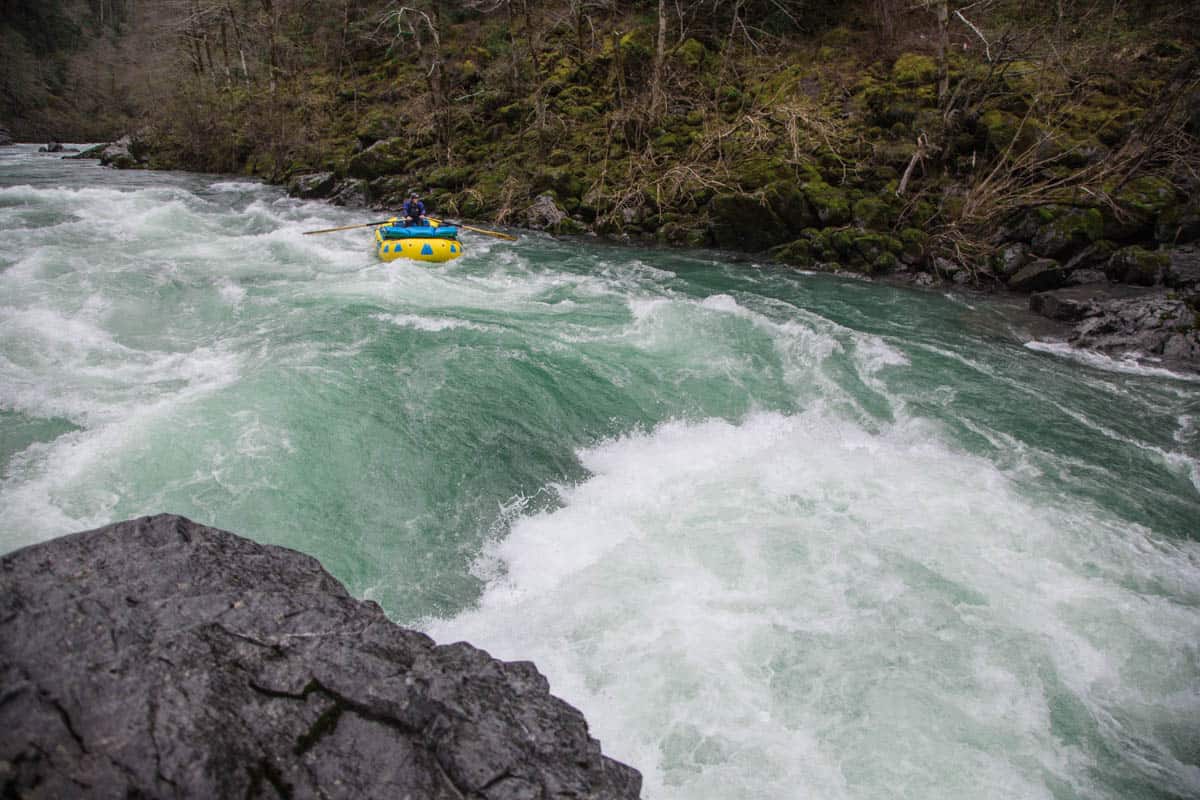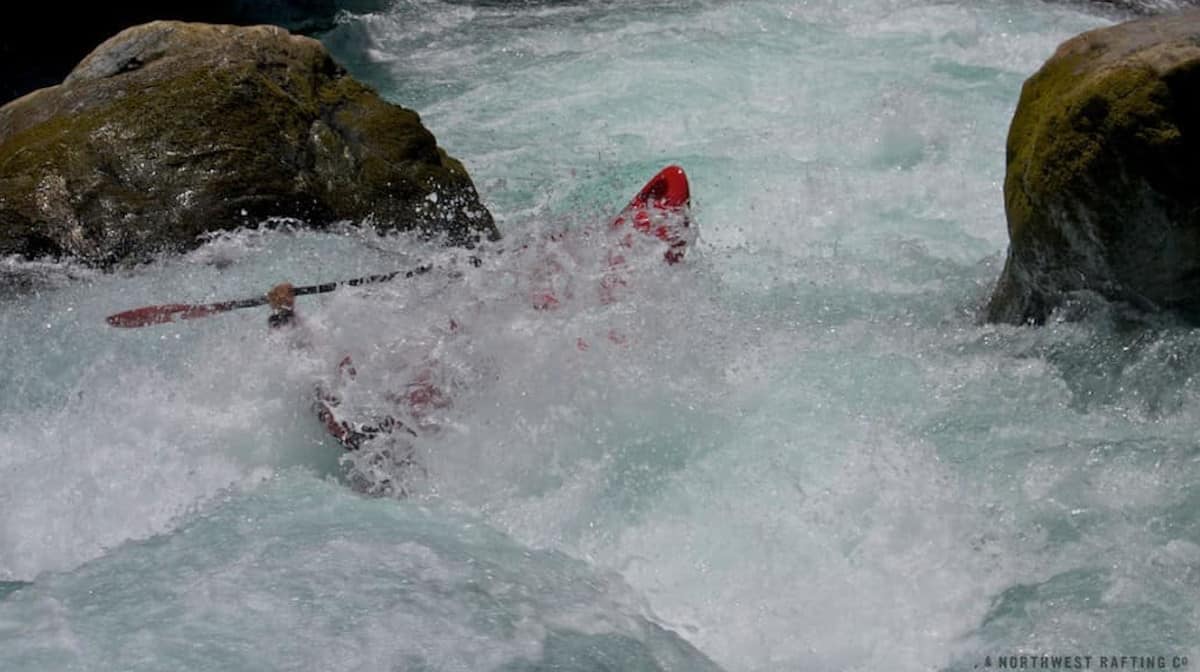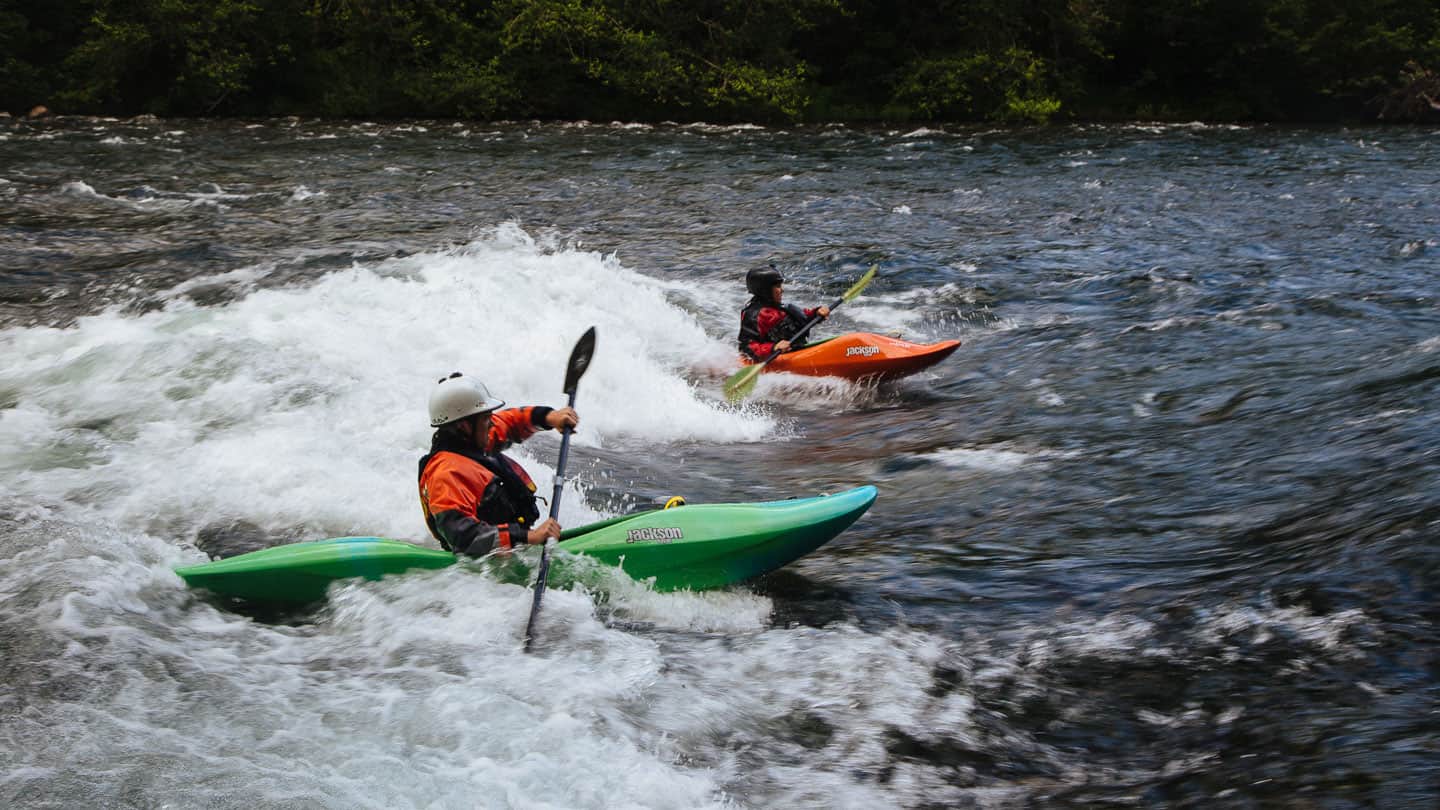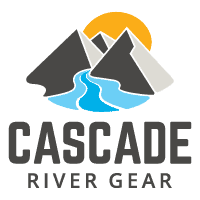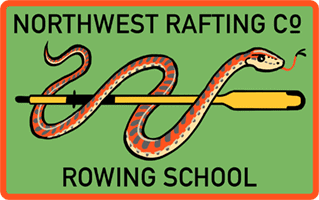What are the Different Types of River Currents?
River water does not flow in a straight line but must meander, fall, swirl, and collect according to its environment. We call these movements currents. As whitewater boaters, we must be able to “read,” understand, and different currents to get safely downstream. Lets jump into learning about who, what, when, where, and whys of river currents.
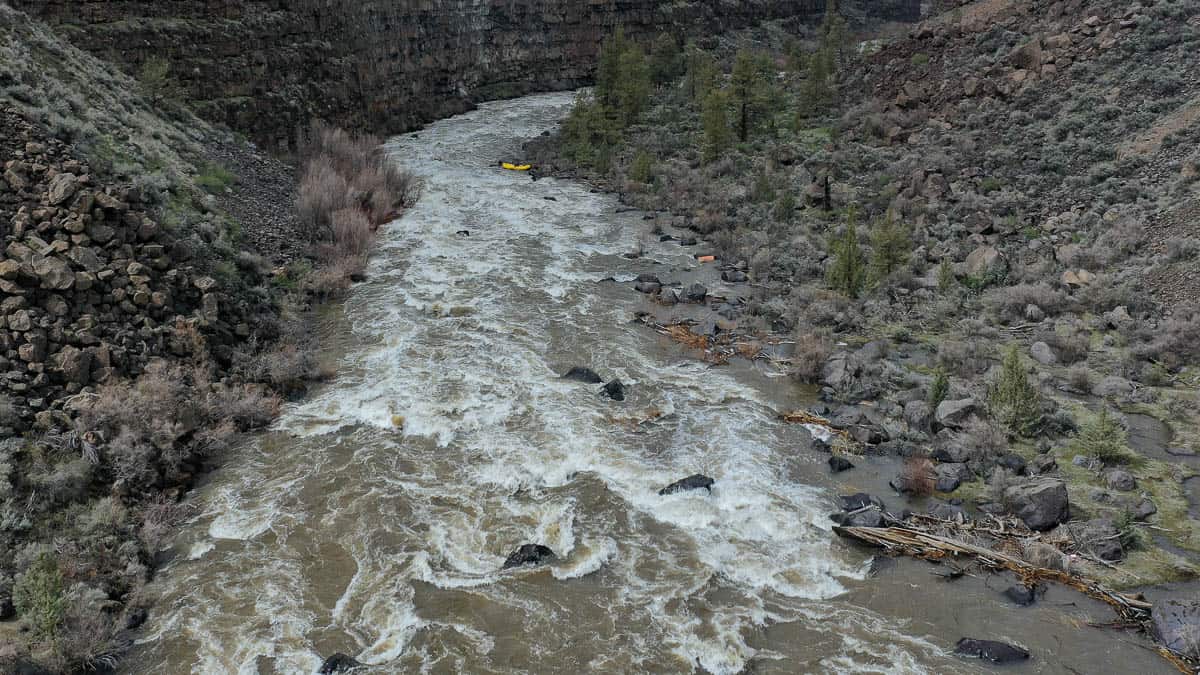
No Name Rapid on the Crooked River at 3400 cfs
What is Laminar Water Flow?
First, let us discuss a simple, straight section of river with or changes in width or depth. Even here, the river will flow at different speeds. The top and bottom of the river are slightly slower with the middle of flowing the fastest. Called laminar flow, the middle piece is unimpeded by the river bottom and surface, which interact with the water to slow these layers down. This is why swimmers often drift ahead of boats. Their bodies sit deeper and come in contact with the fast current just under the surface. Their boat sits on that top slightly slower layer.
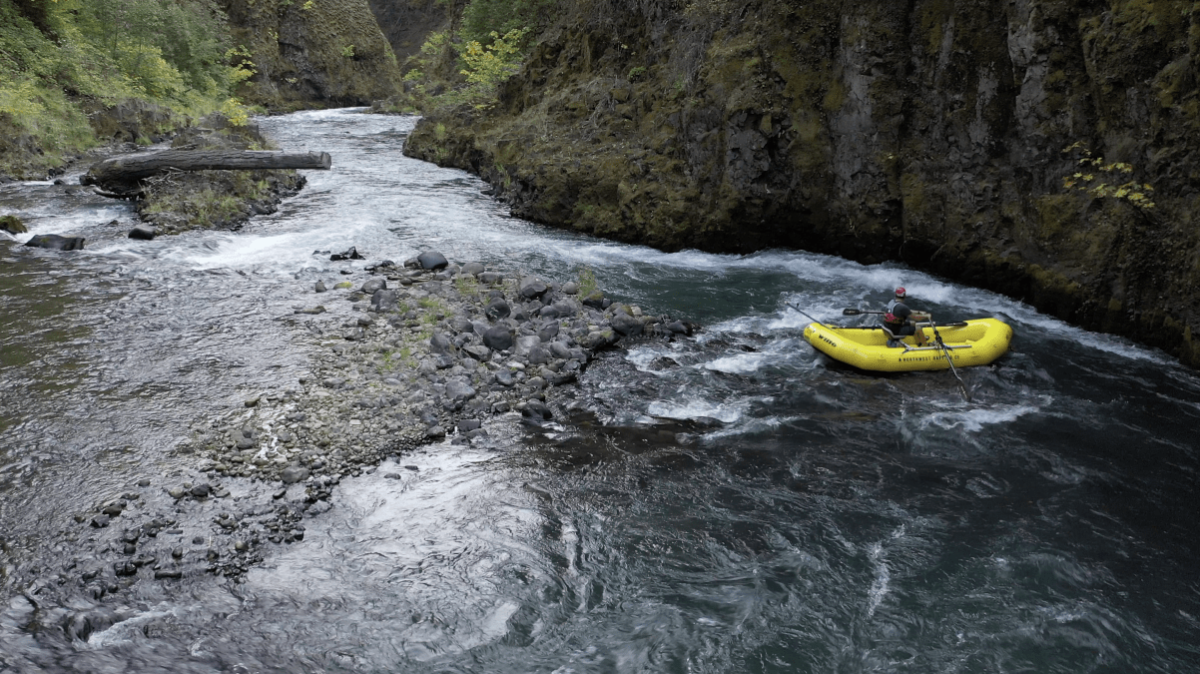
Cutting The "C"
Turbulent Flow
The opposite of laminar flow is turbulent flow, where the water pushes in all directions. Width, depths, and obstacles move all of the different “layers” of water around creating a turbulent and dynamic flow. This is where you will start to see riffles and rapids formed.
What is a riffle?
As water moves downstream it also carries quite a bit of sediment and rocks. In shallow areas, it will deposit all these coarse materials. While also depending on gradient and topography, a riffle will speed up and become choppy as it flows around these obstacles.
What is a rapid?
As a riffle grows it becomes a rapids. Flow, gradient, constriction, and obstacles team up and form rapids. Dig more into how they are formed with a blog Nick wrote.
Changing Speed
It is also important to understand when water picks up speed. In many rivers, some of the fastest water will occur in a gorge. This is because water flows faster when it runs through a constricted space.
Boaters should understand what happens to current speeds around a bend. In general, the water on the outside of the bend will be the fastest. Just like your body naturally moving to the outside as you turn a corner in a car. The current will also be pulled to the outside of a meander. This carves out the bank as well as deepens that channel, slowly cementing the curve. Because less water moves to the inside of the bend, it is usually slower, often creating an eddy. Boaters should approach bends at the angle that they want to leave the bend, finding the balance between staying in the main current and avoiding the outside bank.
What is a riffle?
As water moves downstream it also carries quite a bit of sediment and rocks. In shallow areas, it will deposit all these coarse materials. While also depending on gradient and topography, a riffle will speed up and become choppy as it flows around these obstacles. Bigger riffles become rapids, which are then classified by boaters based on technicality, consequences, and flow. Sometimes, water smooths out and drops into a pool after rapids, which is why we can describe river character as “pool-drop”. If there is too much gradient, less pools will form and that section is considered “continuous”.
What causes an eddy in a river?
An eddy forms by water collecting behind obstructions in a river. As the water flows downstream around the obstruction, it will then flow back upstream to fill the space behind it. In well-defined eddy’s, you can even see this conveyor belt of water moving from the bottom of the eddy back up towards the obstruction. An eddy is not named after anyone, but comes from Old English. The word “eddy” is a combination of ed- (turning, back, reverse) and ea (water).
The area in a big eddy or behind a well-defined obstacle can be fairly calm. But boaters still need to read the water, which may be moving in interesting ways. In addition, the section between the main downstream water and the upstream eddy water is called an eddy line (or fence). It is generally very turbulent and can form boils in the water.
Understanding where eddys form and how the water is behaving makes a huge difference in boating. You can use calmer eddys to your advantage in the middle of a raging rapid or collect a group of boaters to plan the next move. Many eddy’s are caused by protrusions on the bank, which makes for great spots to put in and take out.
What is a boil?
While boaters pay most attention to currents on the surface of the river, water also moves vertically as it reacts to obstacles on the bottom of the river and itself. Boils are a good reminder of these phenomena. Water gets pushed vertically to the bottom of the river and then back up to the surface. At eye level with the river this looks like a large pot of boiling water. In high-volume rivers, boils can be quite large and skate you from one side of the river to another. Boils can even “suck” your boat down.
What is a river hole?
A river hole is the vertical version of an eddy. Water flows over an object and recirculates back upstream to fill the space it missed. Usually, rocks or waves make holes. Water in holes can be quite aerated, meaning a person or boat can sink deep because there is not enough water to support the weight. People or boats can get recirculated in the hole, making escape difficult.
Sometimes holes are great fun. An adept boater can catch the recirculating water and surf the wave. Other holes are retentive or “sticky” but fun to splash through in an appropriately sized boat. If you do not hit them straight, they will likely halt your momentum and turn you sideways to the rest of the river.
Types of Holes
Holes have many different shapes based on the obstacle, flow, and gradient. For boaters, the hole’s edges are particularly important because they dictate how easy it may be to make an exit. A hole with edges that curve downstream (smiling) make for an easy exit. Holes with edged that curve upstream (frowning) are dangerous because the water is recirculating back towards the center of the hole instead of out and downstream. Some holes are horizontal or river-wide and can be natural (ledge hole) or man-made (dam). These types of holes should be approached with caution as exiting them if stuck can be difficult. Holes may also form diagonally, and will move you across and out.
Are there waves in a river?
River waves are formed by a combination of river bed topography, gradient, and river level. Wave formation is actually quite complicated, but I recommend reading about the conditions for creating different waves here.
There are three types of waves especially interesting to boaters.
- Standing waves: These waves maintain their shape and place in the river after a constricted section opens up. They make for fun, splashy rapids. If you swim these rapids, breathe at the bottom of the wave as you will likely get a face-full of water at the top.
- Laterals: Due to the riverbed and walls, lots of waves are not perpendicular to the current. These diagonal waves are called laterals. Boaters need to adjust their angle to hit them straight so they do not get pushed one way or another (like holes).
- Surfing waves: Many whitewater boaters enjoy surfing waves. In general, these waves form as fast-moving water slows due to downstream topography.
ving water slows due to downstream topography.
Here we covered just a few of the many different river currents. Their complicated interactions in the natural world make water reading essential if you want to safely paddle whitewater. This puzzle also makes boating a lot of fun. Now that you know some basic water reading vocabulary, predict what different features will do to your boat, and then see if you are right!
